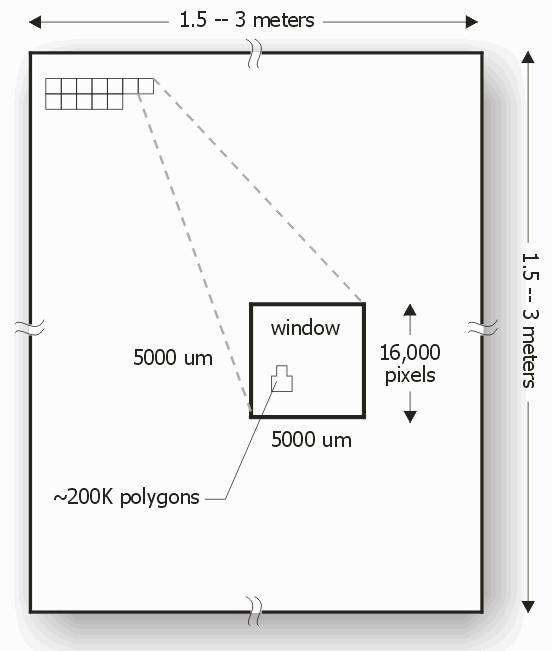
A potential client contacted Artwork and wanted to know how fast the QisMRaster library could process a very dense design layout. Due to proprietary design issues, the client was unable to provide Artwork with a test file. We were able to dig up a number of old files (where the NDA had expired) and we used those files to try to provide some reasonable numbers.
For these types of applications it is customary to use a workstation with many CPU cores and equipped with a large amount of RAM along with solid state drives. We used a dual-socket workstation with the following specifications:
CPU - 2 x Intel Xeon X5570 @ 2.93 GHz
RAM - 128 GB ECC memory
HD - 500GB SSD
OS - Windows 10 Pro
We have a total of 8 physical cores each which supports hyperthreading allowing us to configure QisMRaster to use as many as 16 concurrent threads.
While we did not have the client's test layouts, we did have a general description of the conditions of use. Here is what we know:
Data Pattern
Large area LCD panel ranging from 1.5 x 1.5 meters up to 3 x 3 meters
GDSII File Size
typically under 100 MByte (due to high use of SREF/AREF)
Window Size
5 mm x 5 mm (5000 x 5000 um)
DPI
1 pixel = 0.315 um = 81,280 DPI
Polygons/Window
Client estimates each window will contain 200K polygons.
Target Raster Rate
0.1 sec/window
